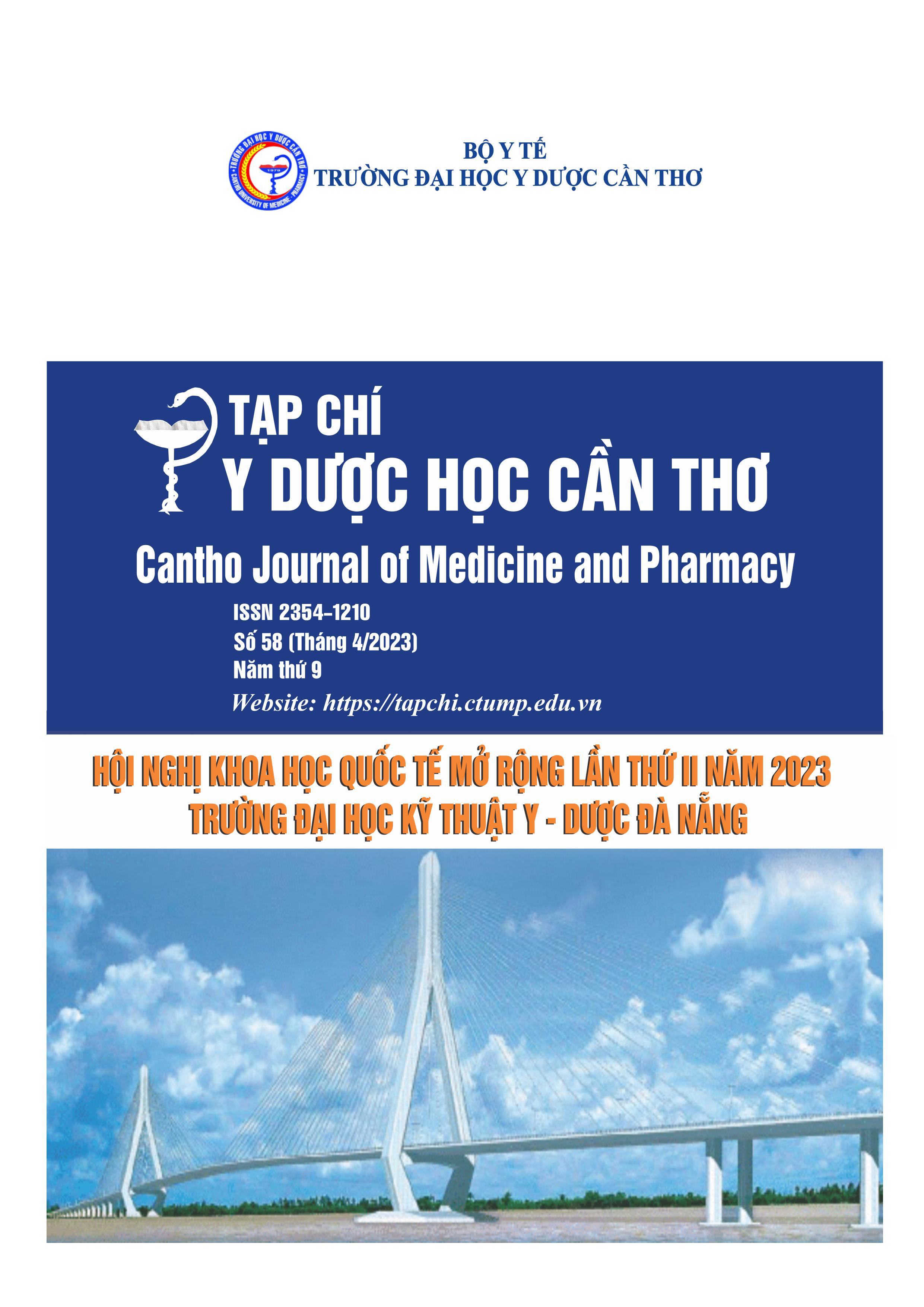CLINICAL, PARACLINICAL FEATURES AND TREATMENT RESULTS OF PREMATURE VENTRICULAR CONTRACT USING RADIO FRENQUENCY
Main Article Content
Abstract
Background: Premature ventricular contract is one of the common clinical arrhythmia. The method of treating premature ventricular contract by catheter ablation using radio frequency energy has outstanding advantages compared to antiarrhythmic drugs in that: the treatment is radical with a high success rate and low complication rate. Objectives: To evaluate of the effectiveness of treatment of premature ventricular contract with radio frequency energy at Da Nang Hospital. Materials and method: Prospective, Cross-sectional descriptive study in 62 premature ventricular contract patients at Da Nang Hospital from 3/2021 to 9/2022. Results: The success rate was 93.5%; failure rate was 6.5%; There were 6 locations in the right ventricular outflow tract with ventricular outflow tract onset, the premature ventricular contract initiation site in the anterior wall of the right ventricular outflow tract accounts for the highest percentage (35.5%). There was a statistically significant relationship between the site of onset of ventricular ectopic pregnancy, early action potential and pacing mapping with radiofrequency treatment results. The recurrence rate of premature ventricular contract was 5.2%. Conclusion: Treatment of premature ventricular contract with radiofrequency energy is a radical treatment with high efficiency, few complications, low recurrence rate and should be the treatment of choice for patients.
Article Details
Keywords
Premature ventricular contract, radiofrequency energy, arrhythmia
References
2. Nguyễn Hồng Hạnh và cs (2008), “Nghiên cứu hiệu quả điều trị một số rối loạn nhịp thất bằng năng lượng sóng có tần số radio”, Tạp chí Tim mạch học Việt Nam, số 49, tr. 15-19.
3. Trương Quang Khanh (2013), “Nghiên cứu kết quả điều trị nhịp nhanh thất nguyên phát bằng năng lượng sóng tần số Radio qua Catheter”, Luận án Tiến sỹ Y học, Học viện Quân y, Hà Nội.
4. Phan Đình Phong (2015), “Nghiên cứu điện sinh lý học tim của rối loạn nhịp thất khởi phát từ xoang Valsalva và kết quả triệt đốt bằng năng lượng sóng có tần số Radio”, Luận án tiến sĩ y học, Đại học Y Hà Nội.
5. Vũ Mạnh Tân, Phạm Quốc Khánh, Nguyễn Thị Dung (2015), “Đặc điểm lâm sàng và vị trí khởi phát của ngoại tâm thu thất/nhịp nhanh thất phải vô căn ỏ bệnh nhân được điều trị bằng năng lượng sóng cao tần radio”, Tạp chí Y dược lâm sàng 108, 15(2), tr. 148-152.
6. AHA/ACC/HRS (2017), Guideline for Management of Patients With Ventricular Arrhythmias and the Prevention of Sudden Cardiac Death. J Am Coll Cardiol, Vol. 138, No.13.
7. Bikkina M, Larson MG, Levy D (1992), Prognostic implications of asymp- tomatic ventricular arrhythmias: The Framingham Heart Study, Ann Intern Med;117: pp. 990-6.
8. Callans DJ. (2017), Premature Ventricular Contraction-induced Cardiomyopathy. Arrhythmia & Electrophysiology Review, 6(4), pp. 153.
9. Capulzini L. et al. (2019), Acute and one year outcome of premature ventricular contraction ablation guided by contact force and automated pacemapping software. J Arrhythm, 35(3): pp. 542-549.
10. Hoffmayer KS, Gerstenfeld EP (2013), Diagnosis and management of idiopathic ventricular tachycardia, Curr Probl Cardiol, 38(4): pp. 131-58.
11. Ling Z. (2014), Radiofrequency ablation versus antiarrhythmic medication for treatment of ventricular premature beats from the right ventricular outflow tract: prospective randomized study, Circ Arrhythm Electrophysiol, 7(2): pp. 237-43.
12. Ng GA. et al. (2006), Treating patients with ventricular ectopic beats, Heart, 92: pp. 1707-12.


